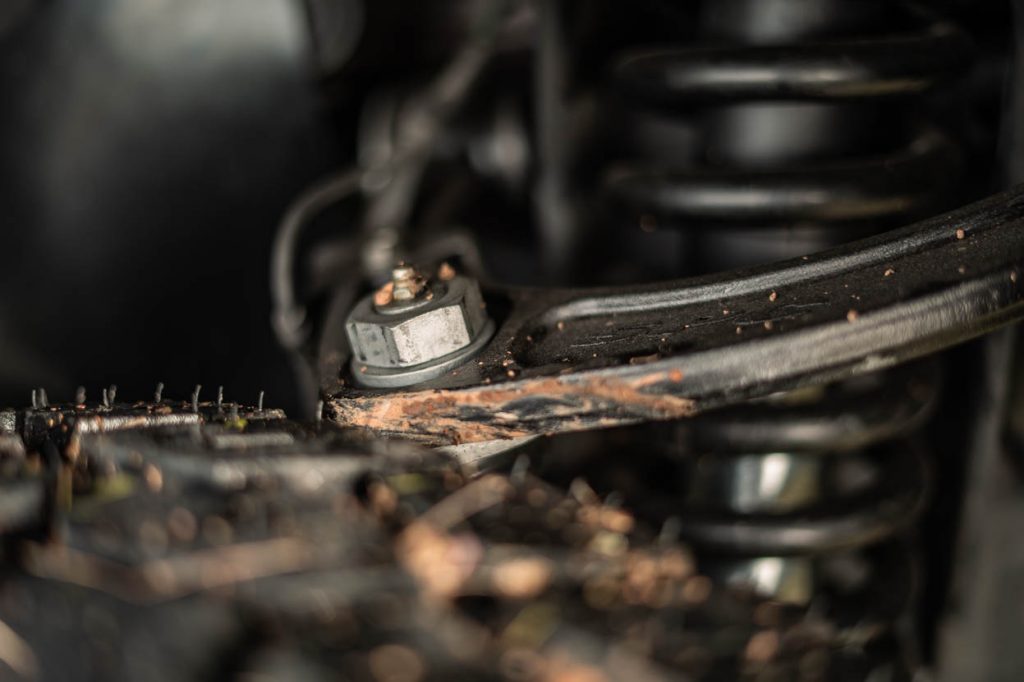
After upgrading to a 285/70R17 (33.1″) tire on our Tacoma, we were amazed to find that the tires didn’t rub anywhere on the body while driving on the road. However, they did rub on the upper control arms (UCAs) during turns.
It’s one thing if the tires rub on the body or even on the inside of the frame, but the control arms are a totally different scenario. You can’t just cut or hammer back the upper control arms like you would with rubbing on the body. And it can’t be left as is, because moving suspension parts and bigger tires don’t mix.
Table Of Contents
How Bad Does It Rub?
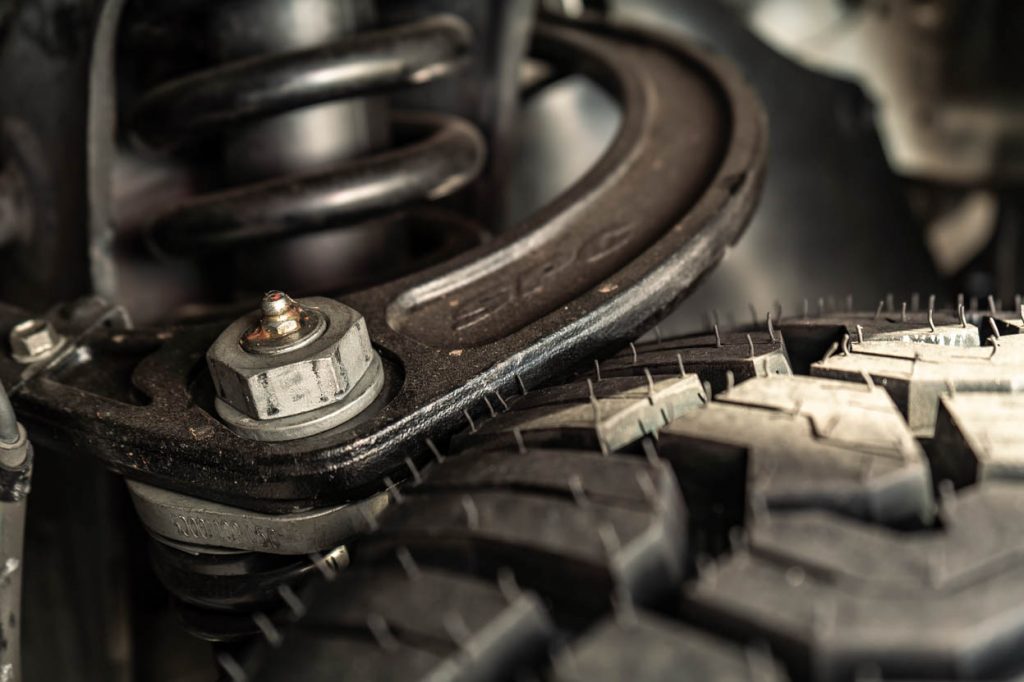
The first, and most obvious question – how badly do the tires rub after installing 33s (285/70R17)?
It’s noticeable!
Driving at normal speeds directly straight on the road really isn’t that bad. Turning at stoplights and cruising down a winding road, you feel a vibration in the steering wheel. Driving around a parking lot where tight turns are inevitable is another story. You can feel the tire not wanting to turn into a parking spot due to so much built-up resistance from the tire rubbing on the control arm.
Under no circumstance would you want to go 4-wheeling without addressing the issue first. With this level of rubbing something is bound to break, especially if the suspension is continuously flexed and tires are seeing a full scrub radius.
On & Off-Road
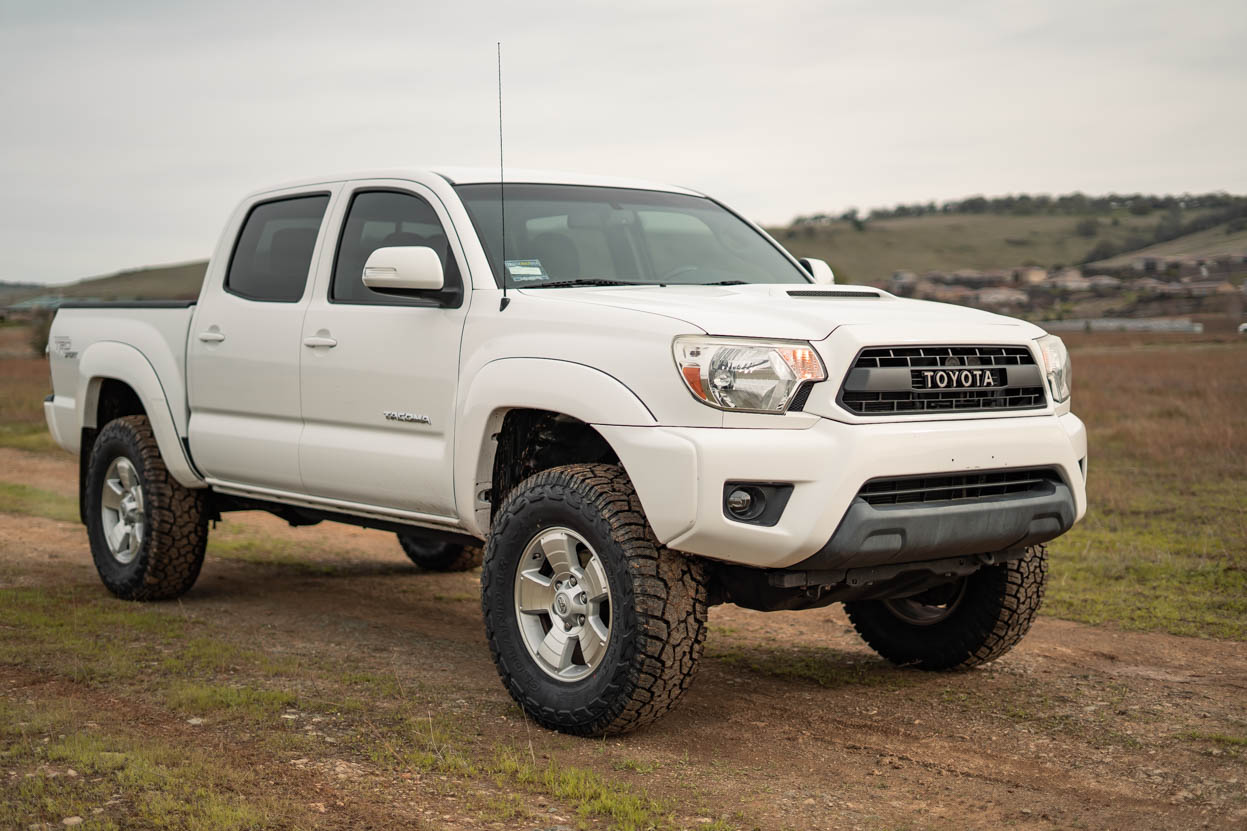
While it is drivable, I don’t recommend it.
Again, moving suspension components and spinning tires do not go together. If it’s your only way from point A to B – you’ll be okay to drive it around for a couple of days before your solution to this problem is delivered (wheel spacers or new wheels). Keep in mind parking lots and tight turns, in general, are the worst with rubbing upper controls arms.
Off the pavement, it definitely gets worst. There’s no way you would be able to comfortable off-road without doing something about the rubbing. If you were to go wheeling with the control arm rubbing this bad, the chances of something breaking is much higher.
Let’s just say general driveability is horrible, is in no way considered safe, and action should be taken immediately to resolve the rubbing issue.
Rubbing With Stock Wheels
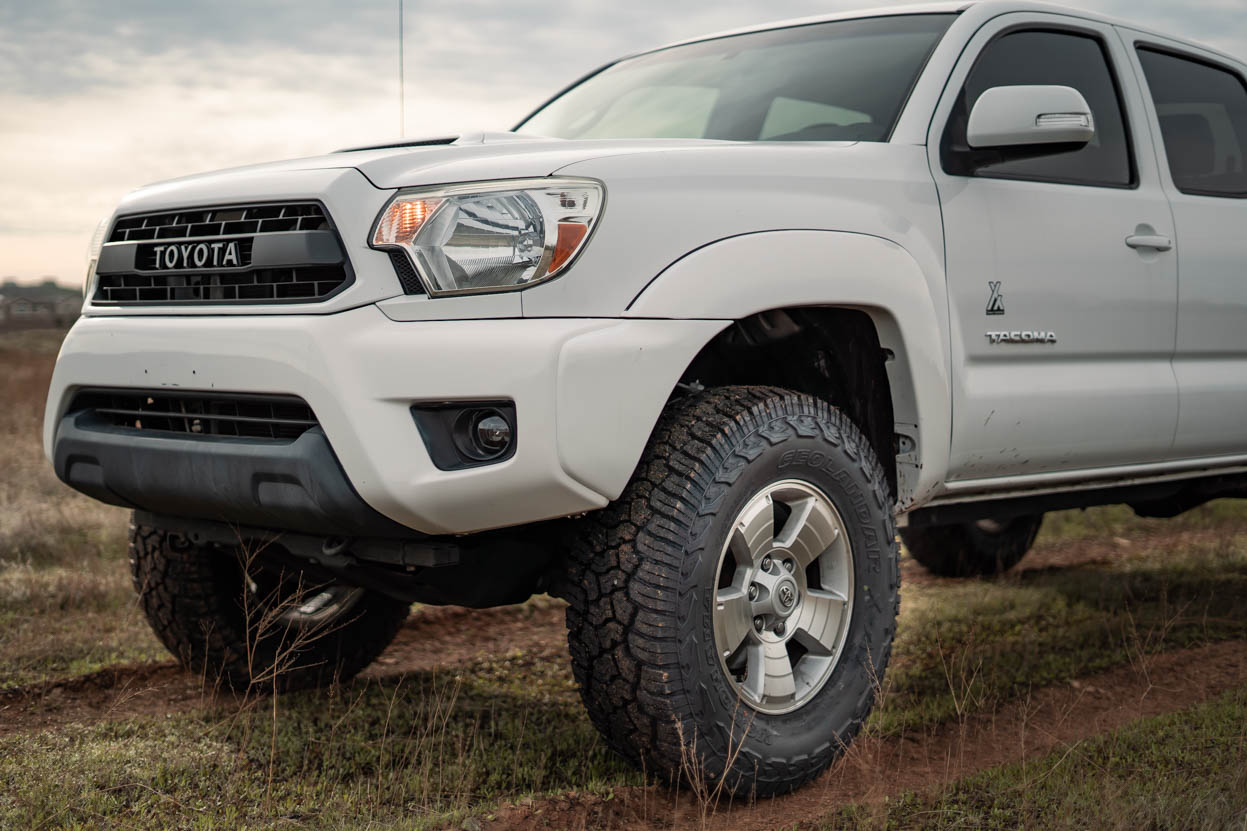
Why do the tires rub so bad on the UCAs?
The reason the control arms rub on 285s is due to the stock wheel size. Tacomas came in a wide variety of wheel sizes, but a majority of them have +30 offset. This means that the centerline of the wheel is behind the hub, and deep inside the wheel well. Because the tire rests so far inside the fender well, the sidewall is incredibly close to the upper control arms. Depending on the style of tire you are running, the sidewall and shoulder may sit even closer. If you are running a burly mud-terrain tire with beefy sidewall lugs, that will get you even closer to the upper control arms and rub worse than our all-terrains do.
There are many different factory wheel options for the Tacoma so depending on which wheels you have, you may not rub at all. Most of the TRD Off-Road and Sport packages come with +30 offset, where the TRD Pro wheels come with 0mm of offset. The TRD beadlocks have a nice middle ground at +12 offset.
How To Fix
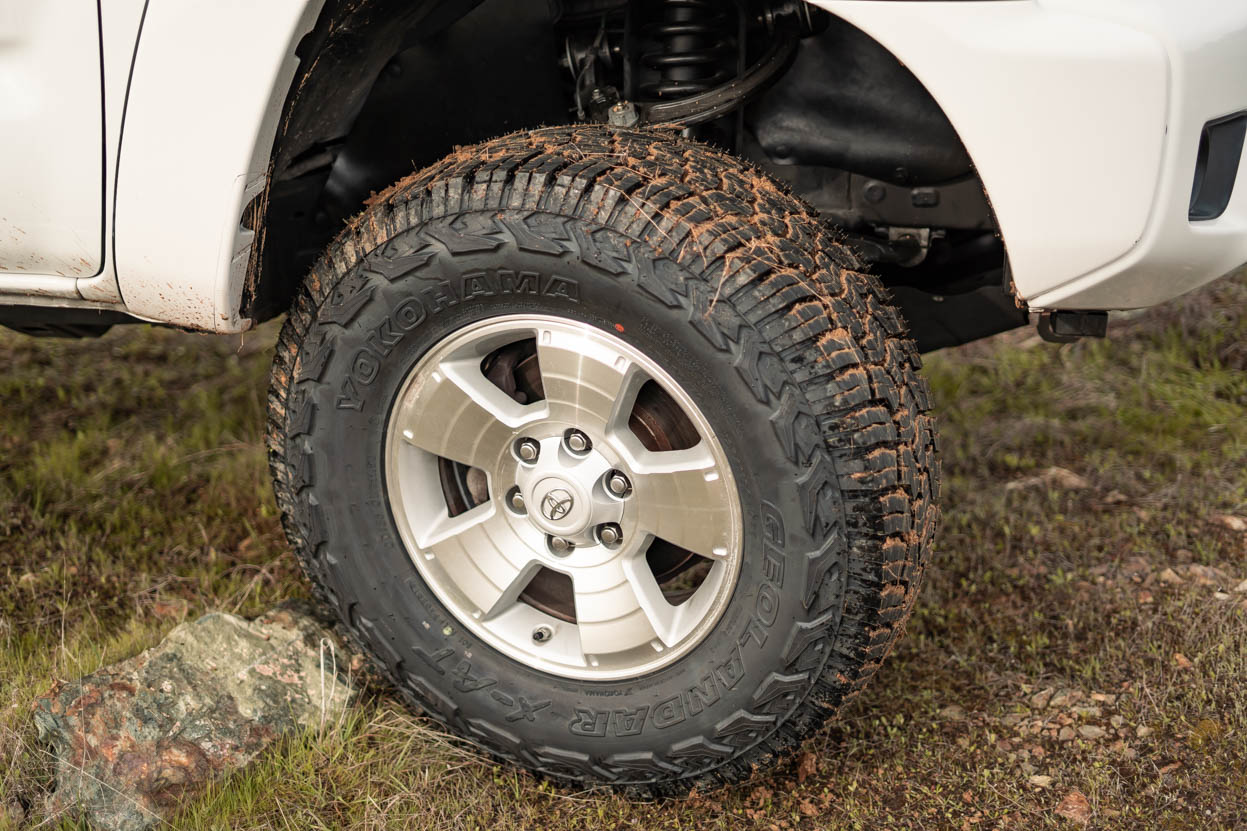
The solution to fix rubbing on the UCAs would be going with a more aggressive offset in the negative direction or even to just reduce the positive offset alltogether. You can run wheel spacers to push the wheel/rim and tire out and away from the UCAs or you can buy new wheels with 0 (zero) offset or even – (negative) offset to push the tire out and away even further.
Let’s take our situation for example
- We’re running a +30mm offset wheel
- If we buy 0 offset wheel, we’re reducing our offset by 30mm (1.18″)
- This 1.18″ of space gives us enough room to clear the UCAs
- If we buy a -6mm offset wheel, we’re reducing our offset by 36mm (1.4″)
- If we buy a -12mm offset wheel, we’re reducing our offset by 42mm (1.65″)
- If we buy a -30mm offset wheel, we’re reducing our offset by 60mm (2.36″)
- If we add 1.25″ (31.75mm) wheel spacers to our +30mm wheels, we’re reducing our offset by only 31.75mm (1.25″)
The amount of inches with each amount of offset is where the outside edge of your tire is compared to your hub. So with our 1.25″ spacer on stock wheels, the offset of the wheel isn’t changing but we are bringing the outside edge of the tire out away from the hub 1.25″. This will then bring the inside edge of the tire out, giving us more than enough room to clear the control arm.
Since the outside edge of your tire is farther away from the hub, premature wear to the bearing assembly will occur at a slightly accelerated rate. For this reason alone, we recommend bringing the tire out just far enough so you won’t have any rubbing issues. In other words, don’t try and get as much stance as possible just because it looks cool. If you were to run -30 offset wheels and a 1.25″ spacer then the life of your wheel bearing would be significantly reduced due to the stress put on it by the tire assembly stick so far out. +30 offset wheels and a 1.25″ spacer work just fine since the whole wheel is moving out a 1.25″ rather than 3.61″ with -30 offset and a 1.25″ spacer.
Let’s look more at how wheel spacers work.
Wheel Spacers or New Wheels?
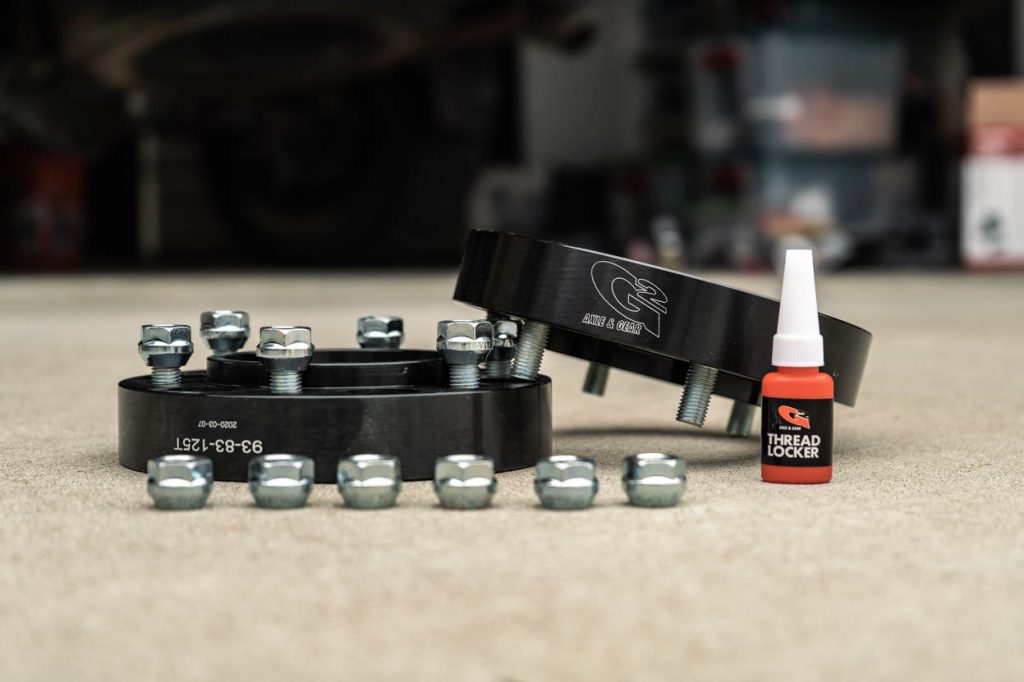
Wheel spacers and/or a new set of wheels are your only option to clear the control arms.
Let’s Start With Wheel Spacers
If you decide to go with spacers, we recommend only buying hub-centric spacers, not lug-centric spacers. Hub-centric spacers vs. lug-centric spacers will be a topic for another day. We will be drafting that post soon. To put it simply; hub-centric spacers are centered by the center bore of the wheel and the hub flange while lug-centric spacers are centered by the lug bolts torque. Lug-centric wheel spacers are designed with a more universal approach, meaning they are not exclusive to Toyota applications.
For spacer size, we don’t recommend going above 1.25″. In order to preserve the life of your wheel bearings, you don’t want the wheel sitting too far off of the hub. As always, make sure your wheel spacers are installed correctly with proper torque specs and thread locker. Please read the installation instructions for your specific spacers.
For spacer wheel studs, we recommend going with machined billet aluminum spacers that are running at least grade 8 bolts. Wheel spacers with at least a minimum of grade 8 studs are what you would consider best-practice when running spacers or any suspension components for that matter. Some companies like Spidertrax use Chromoly in some cases can be upwards of 10% stronger tensile strength than grade 8.
We had an extra set of G2 Gear & Axle (Hub-Centric) spacers in the shop so we threw them for the sake of this post. The 1.25″ wheel spacers gave us more than enough clearance in between our 33-inch tires and the upper control arms. If you need a quick or even permanent fix to clear the upper control arms with larger tires, a set of hub-centric wheel spacers are typically around $100 a pair.
Options for Hub Centric Spacers:
- G2 Gear & Axle Hub Centric: Check Price
- Spidertrax WHS-007 Hub Centric Check Price
Upgrading Wheels
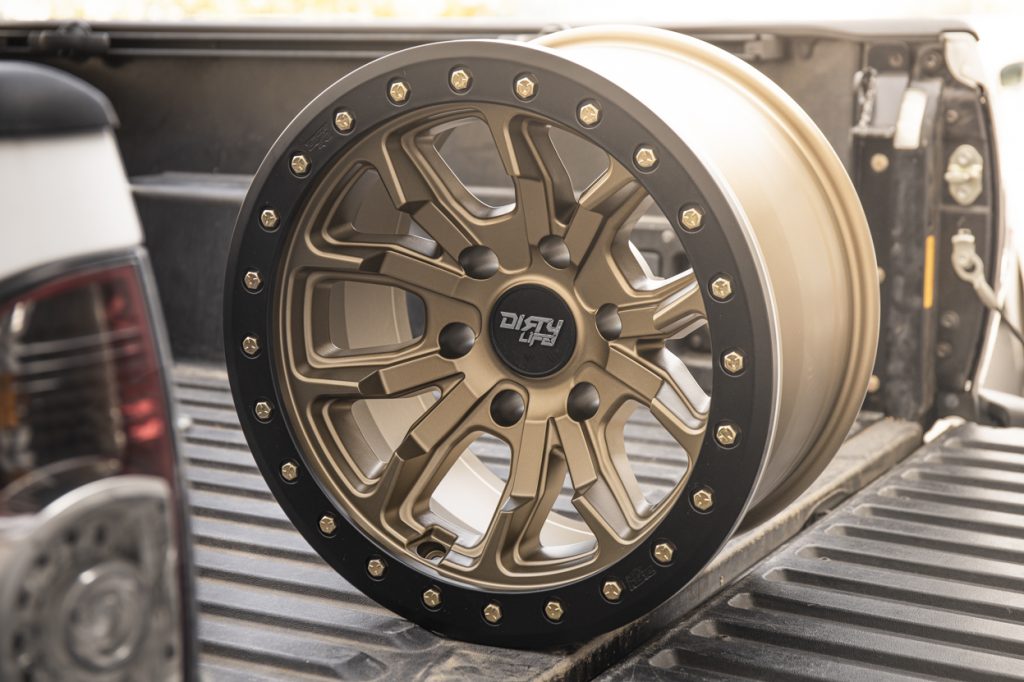
Pictured: Dirty Life Beadlocks with -38 Offset (9303 DT-1 – BEADLOCK Bronze)
If you choose to get some new wheels, you need to go with a more aggressive (negative) offset or just a 0 offset mentioned above.
A negative offset is when the hub is behind the centerline of the wheel bringing the tire out of the wheel well and away from the truck and suspension. A wheel with a more negative offset is sometimes referred to as having more “poke” – meaning that the wheel sticks out beyond the normal dimensions, sometimes beyond the body and flares. This also provides a nicer looking “stance” mimicking Tacoma builds with long-travel suspension. Many guys run larger – offset just to give their truck that wide stance because it looks cool, however, they don’t actually need spacers at all or extreme negative offset wheels.
Just like wheel spacers, there are companies that make hub-centric wheels rather than lug-centric. A majority of aftermarket wheels are lug-centric because this makes these wheels more universal so that a Chevy 6×5.5 will fit a Toyota 6×5.5. Companies that offer hub-centric wheels include Stealth Custom Series and Relations Race Wheels. Additionally, if you went with another brand of aftermarket wheels, you could buy a hub-centric ring that would essentially make a lug-centric wheel hub-centric. Hub-centric wheels will greatly reduce the wear on your wheel bearing if you were to run a more aggressive offset.
What’s Better?
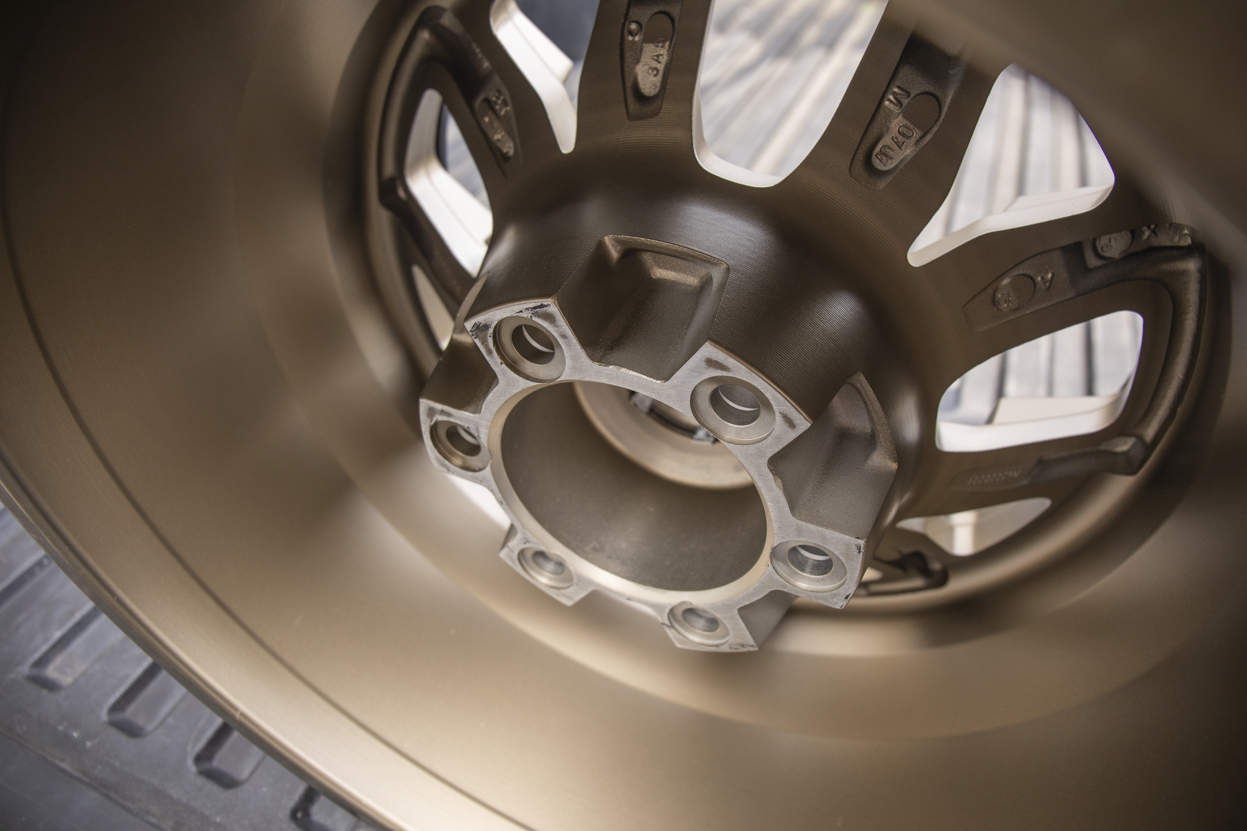
Pictured: -38 Offset Dirty Life Beadlocks w/ 3.5″ backspace (inside rim)
There are many people out there who will tell you that wheel spacers aren’t safe. It’s not necessarily that wheel spacers aren’t safe it’s that incorrect installation can lead to unsafe mounting which leads to failure. So with that said, yes wheel spacers can be dangerous if you don’t install them correctly. Wheel spacers can also be dangerous if you buy no-name brands from low-quality control production facilities.
One is not necessarily “better than the other”, however, wheels are more than likely a safer and more traditional method when it comes to gaining more clearance in the wheel well as there are fewer parts that can fail. Additionally, it’s important to know that some tire and wheel shops will not work on trucks with wheel spacers installed. It goes against some shop policies to install wheels directly onto wheel spacers.
Whichever method you chose to go with keep in mind that moving the outside edge of the wheel away from the hub is going to cause premature wear on your bearing assembly. If you stick with smaller size spacers (1.25″) and less aggressive offset (just enough to clear the upper control arm) then the wear on the wheel bearing will hardly be noticeable.
What’s Next?
We have many different wheels going on Tiffany (this white DCSB here) soon. We are starting with a set of Relations Race Wheels with a 0 offset, then Fuel Wheels with a -6 offset, and eventually Dirty Life Beadlocks (9303 DT-1) with a -38 offset and a 3.5″ backspace (pictured above). That’s going to be a massive push outside of the wheel well. All of this is for the sake of testing and documenting each offset. Lots of wheel and tire combinations are in this truck’s future. Additionally, we are going with LT lowers/uppers, extended tie-rods, RCV Chromoly CV axles, a Tundra steering rack, and 37″ MTs. Tiffany is our shop truck and you will be seeing much more of her here on the site.
Final Thoughts

You have a couple of options for fixing upper control arms (UCAs) rubbing on your tires. Either buy a set of wheel spacers or upgrade to a new set of wheels. Wheels with negative offset will bring the outside edge of the tire away from the hub, giving you plenty of clearance on the upper control arm. Spacers move the whole wheel and tire assembly off the hub which ultimately does the same thing as aggressive offset wheels.
Both options, wheels, and spacers, are completely safe if installed correctly. Wheel spacers require proper torque specs and thread locker while wheels must have proper balancing and torque specs when you mount the whole assembly.
Spacers and wheels both cause premature wear on the wheel bearing assembly. The reason is that there is more stress on the outside edge of the hub. This is why we recommend keeping the negative offset, and wheel spacers, to a minimum. You should have just enough clearance to not rub anywhere while daily driving or off-roading. If you do buy extreme negative offset wheels, do it at your own risk.
When the time comes to buy wheel spacers or wheels, try and stick with brands that make hub-centric products. This will help increase the life of your wheel bearings and hub assembly, not to mention there won’t be any vibrations in the steering wheel. If you go with a lug-centric wheel buy some centric rings to help with the fitment of the wheel on the hub.
If you have stock wheels on your Tacoma and upgrade to bigger tires, you’re going to rub on the upper control arm. Wheel spacers and wheels with aggressive offset should not scare you away from upgrading to bigger tires as they both provide safe options (if installed correctly) to clear the upper control arms.


Thank u I just found out how to fix my Tacoma by reading this Ty
Do you have to get front and rear spacers?
This was awesome information. I have a 2015 Tacoma and im about to put 33″ on it (285/70R17). I have the fox 2.0 suspension as well as i bought a pair of method wheels with a 0 offset. I am worried i wont be able to make those fit without doing a body mount chop. What do you think?
I have the TRD wheels with the +4mm off set. Would I still need the 1.25 spacer to clear the UCA?
Have a 2022 4Runner Trail edition. Put a 3” lift on it. Trying to run a 0 offset Fuel wheel with a 305/55 with 1.25” wheel space and new UCA. Cannot seem to get it to stop rubbing. We also did a body mount chop and cutting of body. Help!!!
Huge scrub radius with those spacers. That’s your biggest issue. The offset is quite large. Check out Trail4Runner.com for more 4Runner specific posts!
This is the most helpful website in the taco world, it told me everything I needed to know when I bought a new set of rubber. The tire was millimeters away from the control arm, just some 0 offset wheels and I was able to fit them with no lift. ?
Hey Collin, we love to hear that! Makes all of the efforts we put in worth it. Thanks for following along.